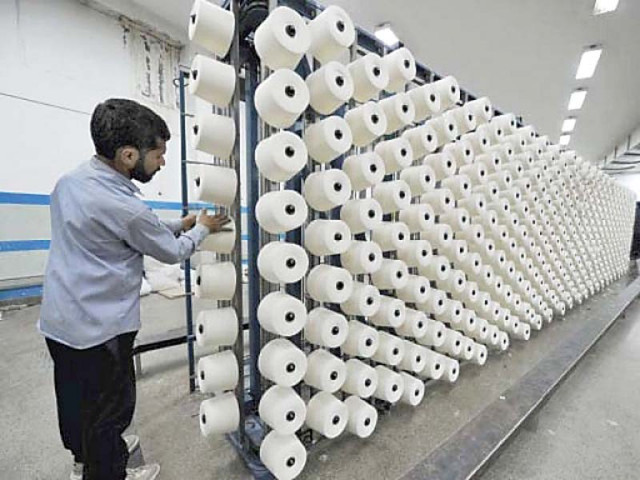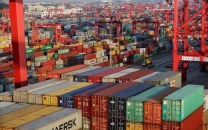Analysis: Is PM’s textile package the answer to falling exports?
Package fails to address real issues of exports: low productivity, poor quality

Government will implement the package from January 2017 to June 2018 by abolishing customs duty and sales tax on import of cotton, man-made fibre and textile machinery. PHOTO: FILE
In January 2017, the SBP reported exports for 2015-16 were recorded at $21,977 million. This is a decline by 12.36% during the time period, when a 1% decline is observed in the global level of exports of goods and services. This decline is despite the acclaimed GSP Plus status that Pakistan had obtained in December 2013, suggesting that PML-N has comparatively enjoyed an advantage over its predecessor’s government in terms of market access.
The government is obviously not sitting idle over this historical decline–as this has weakened the confidence of its core constituency of traders on the economic policies. When the prime minister announced “Trade Enhancement Incentives” with the price tag of Rs180 billion last week, he presented it as the panacea to declining exports.
It is not the first example of a package for exporters.
Earlier, the government had already reduced the power tariff for the industries from Rs15-16 per unit to Rs11 per unit. Similarly, the government is providing uninterrupted power supply to the industries in the country.
In addition, the government had already given zero-rated facility to five export sectors in the budget. Thus, it’s not that the PML-N does not have ideas to boost exports. Rather they have plenty of bad, impractical and ineffective ideas. Let’s analyse the recent Rs180 billion package.
Incentives and flaws
Essentially, the government will implement the package from January 2017 to June 2018 by abolishing customs duty and sales tax on import of cotton, man-made fibre other than polyester and sales tax on import of textile machinery.
As a result of these measures, the government expects gain of $2 to $3 billion in exports by June 2018.

The net gain – difference between the loss in trade tax revenue of $1.8 billion and the marginal expected gain of $2 billion – is $200 million. This $200 million additional benefit assumes 100% probability of an increase in the exports.
Part of the deal is that there will be no condition on getting duty drawback in the first six months (January to June) of the scheme. However, exporters will have to record 10% growth in exports during the next fiscal year 2017-18 as compared to the ongoing financial year.
This will open a new Pandora box, where the exporters will try to outsmart the system by showing false increases in the exports.
In July 2016, the finance minister confidently announced that exports will receive a boost with zero-rated facility for five export sectors. The exports actually declined even in last six months, when compared on a month-to-month basis with 2015. The zero-rated facility proved ineffective in boosting exports.
From 2005 to 2008 Pakistan’s government spent Rs50 billion in research and development of subsidies for the textile sector. Hardly any money was actually spent on research and development and most of it ended up at a price transfer the buyers benefited at the cost of tax payers.
There is also the issue of tightly controlled exchange rate by the finance minister. It has been observed that Pakistani rupee is a bit artificially over-valued, thus keeping the price of exports high.
The real issues underlying the decline of textiles and broadly export sector are: low productivity owing to poor quality of human resource at design and quality stages, uncertainty in energy supply, an inward looking protective tariff regime, artificial support from the government and a general lack of competitiveness in the business firms.
The package is hardly the answer to these deeper problems. It will only help delay our attention from realistic diagnosis. Worse, these packages, because of the power dynamics often benefit large and well-connected textile firms. In other words, the Rs180 billion package is a part of the problem, not the solution.
The writer is founder and executive director of PRIME Institute, an independent free market think tank
Published in The Express Tribune, January 16th, 2017.
Like Business on Facebook, follow @TribuneBiz on Twitter to stay informed and join in the conversation.


















COMMENTS
Comments are moderated and generally will be posted if they are on-topic and not abusive.
For more information, please see our Comments FAQ